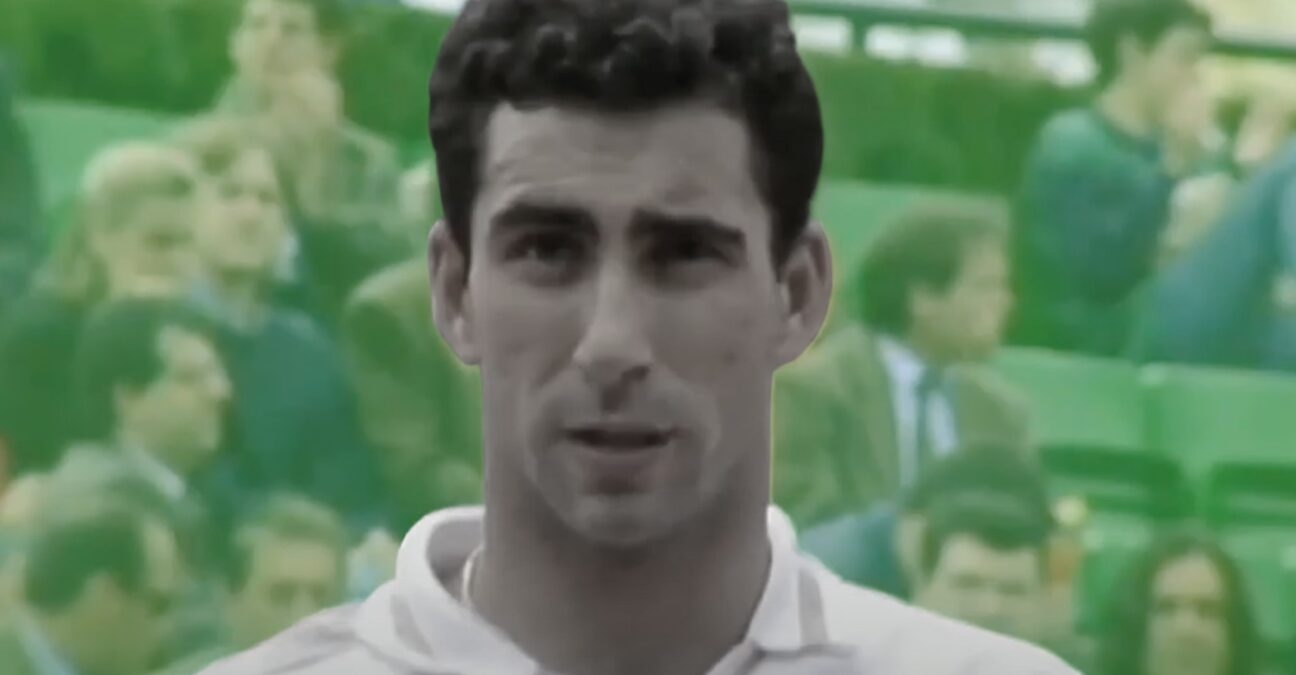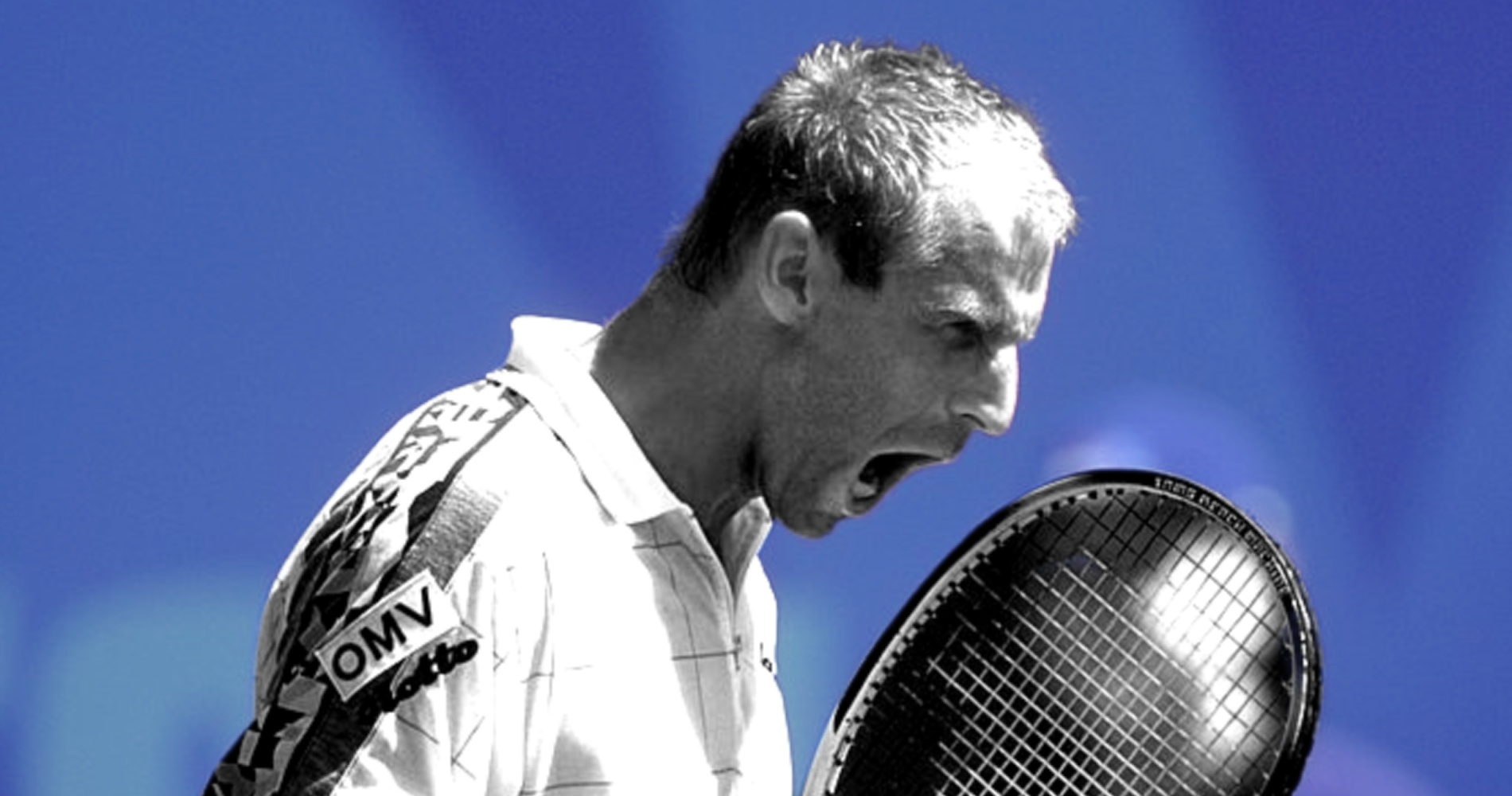August 6, 1995: The day future Roland-Garros champion Albert Costa claimed his first ATP title
Every day Tennis Majors takes you back in time to celebrate a great moment in tennis history. Today, we go back to 1995 to remember the day Albert Costa defeated Musterminator, the clay-court terror, in the Austrian’s backyard, to claim his first ATP title in Kitzbühel

What happened exactly on that day?
On this day, August 6, 1995, future Roland-Garros champion Albert Costa, aged 20 at the time, claimed his maiden ATP title in Kitzbuhel. On top of that, to achieve the feat, the young Spaniard defeated local favourite and Roland-Garros champion Thomas Muster, who was almost unbeatable on clay at the time.
The players involved: Albert Costa and Thomas Muster
- Albert Costa: The rising ATP player from Spain
Albert Costa, born in 1975, turned pro in 1993, and broke into the top 100 the following year, soon after his first top10 win (against Sergi Bruguera in Estoril, 6-2, 4-3, retired). He made himself famous in 1995 at Roland-Garros, with an impressive fourth-round win against former world No 1 Jim Courier (6-4, 1-6, 7-6, 6-4), and by extending the eventual champion, Thomas Muster, to a fifth-set battle in the quarter-finals (6-2, 3-6, 6-7, 7-5, 6-2). In August 1995, Costa was ranked No 27 in the world.
- Thomas Muster: From hitting forehand on a bench to winning Roland-Garros
Thomas Muster was born in 1967. Left-handed, the Austrian developed a typical clay-court game, with a lot of spin on both sides and incredible fitness. His tactics relied on long and intense rallies from the baseline, which earned him the nickname “Musterminator”. He won his first title on the tour in 1986 in Hilversum on red dirt, defeating Jakob Hlasek in the final (6-1, 6-3, 6-3). Although all his titles were won on clay until 1990, he had his Grand Slam breakthrough on hard court at the 1989 Australian Open, where he reached the semi-finals (lost to Ivan Lendl, 6-2, 6-4, 5-7, 7-5). That year, just after he beat Yannick Noah in the Miami Open semi-finals (5-7, 3-6, 6-3, 6-3, 6-2), he was hit by a car and his knee was badly damaged. After surgery, he left an indelible image in tennis history with a picture of him hitting forehands while sitting on a bench with is leg in a cast quickly spread. It became the very image of resilience.
Muster’s will to come back paid off and he was back on the tour in 1990, and soon, he reached the semi-finals at Roland-Garros that same year, losing to eventual champion Andres Gomez (7-5, 6-1, 7-5). Despite his first hard court title in Adelaide (defeating Jimmy Arias in the final, 3-6, 6-2, 7-5), he realized that playing on clay was much better for his knee and he concentrated even more on the surface, claiming almost all of his titles on his favorite surface. He had notably triumphed at the Italian Open in 1990, and at the Monte-Carlo Open in 1992. In 1995, he completed one of the most successful clay-court seasons of all-time: remaining undefeated for 40 consecutive matches on red dirt, triumphing in Estoril, Barcelona, Monte-Carlo, Rome and finally at Roland-Garros (defeating Michael Chang in the final, 7-5, 6-2, 6-4).
The place: Kitzbuhel, Austria
The city of Kitzbuhel, a ski resort in the Austrian Alps, held a clay court tennis event every year since 1958 in the summer, shortly after Wimbledon. Although it was not one of the biggest tournaments in terms of prize money, top players often played here, attracted by the possibility to spend more time on clay, and by its scenery. Amongst former champions were tennis stars such as Guillermo Vilas (1977, 1979, 1982, 1983), Pete Sampras (1992) and Thomas Muster (1993).
The facts: Albert Costa wins in five tough sets
In 1995, on clay court, facing Thomas Muster was the ultimate challenge. The Austrian had earned his nickname of “Musterminator”, accumulating 40 consecutive wins and triumphing at Roland-Garros for the first time. For Albert Costa, on August 6, the challenge was even bigger, as not only did he play against Muster in the Austrian’s backyard, in Kitzbuhel, but he also faced him in the final, and the powerful left-hander had won his last 24 finals on clay. The last man to have defeated him in a clay court final was Karel Novacek in Munich in 1990. Meanwhile, the young Spaniard had lost his first two ATP finals, both in 1995, in Casablanca and Estoril.
However, Costa had at least two good reasons to believe in his chances. The first one was that, despite having been destroyed by Muster in the Estoril final in the spring (6-4, 6-2), he had been the only player to push him into a fifth set during his run to the Roland-Garros title. The second one was that the Austrian’s 40-match win streak had recently come to an end, when he lost to another young Spaniard, Alex Corretja, in Gstaad (7-5, 6-1). Interestingly, Corretja, a close friend of Costa, played a similar game, using a lot of topspin, a one-handed backhand and running around his backhand as often as possible.
At the time, many tournaments, despite not being Grand Slams, had their final played in a best-of-five set format, and Kitzbühel was among them since 1986. Since then, three finals had been played in five sets, but Costa and Muster were about to play the fourth one. After more than three hours of a tough contest from the baseline, with both players using their massive topspin to keep the opponent at bay before running him around, Costa prevailed (4-6, 6-4, 7-6, 2-6, 6-4) and claimed his maiden ATP title.
What next? Costa wins the French Open while Muster becomes world No 1
In total, Albert Costa would claim 12 titles throughout his career, all of them on clay. His career would peak in 2002 when he would unexpectedly triumph at Roland-Garros, defeating several tournament favourites such as Gustavo Kuerten, Alex Corretja and Juan Carlos Ferrero (6-1, 6-0, 4-6, 6-3 in the final). The following year, trying to defend his title, he would make his way into the semi-finals after winning four five-set matches, spending more than 21 hours on the court before being defeated by Ferrero (6-3, 7-6, 6-4). He would finally announce his retirement in 2006.
Thomas Muster would go one to reach the world No 1 spot in February 1996. He would then go on a second incredible clay-court winning streak, claiming five titles in Mexico, Estoril, Monte-Carlo, Barcelona and Rome, before he was defeated to everyone’s surprise by Michael Stich in the fourth round at Roland-Garros (4-6, 6-4, 6-1, 7-6). After a last big tournament won in March 1997 in Miami, where he would beat Sergi Bruguera in the final (7-6, 6-3, 6-1), and a last quarter-final run at the French Open in 1998 (lost to Felix Mantilla, 6-4, 6-2, 4-6, 6-3), Muster would slowly fade from the tour and retire in 1999. The Austrian made a brief comeback on to the ATP Tour in 2010-2011, and even won a couple of matches on the ATP Challenger Tour.










